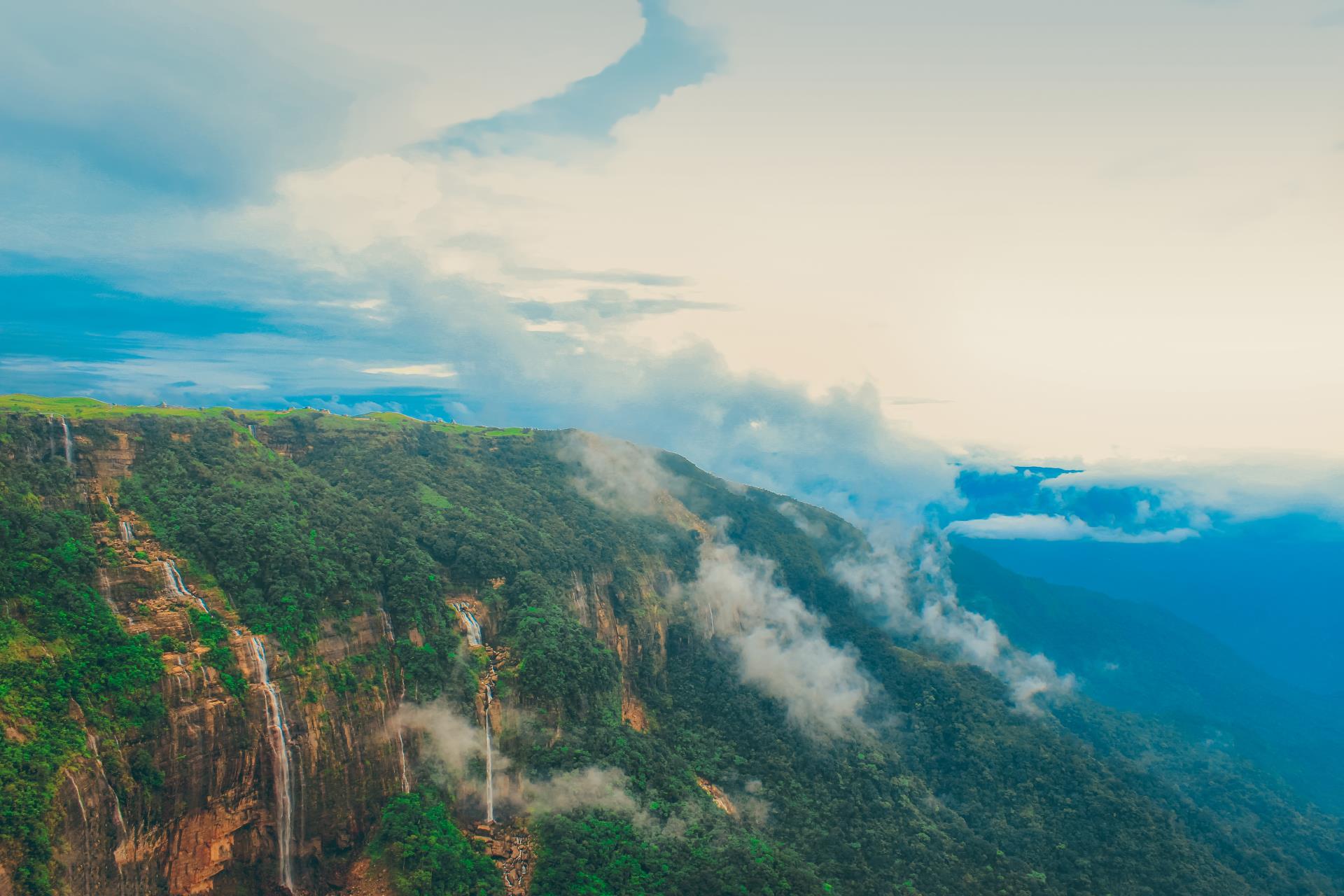
Sorry, we couldn't find anything that matches your search.
Destination

Famous Places to Explore in Hyderabad
A vibrant city with the imposing...

Raipur Tourist Places | Best Place to Visit
The stronghold of several erstwhile...

Ahmedabad
Declared as India's first UNESCO World...
#
 Start : Mumbai
Start : Mumbai
 End : Patna
End : Patna
 Time : 14 days
Time : 14 days
Day 1 : Arrive in Mumbai
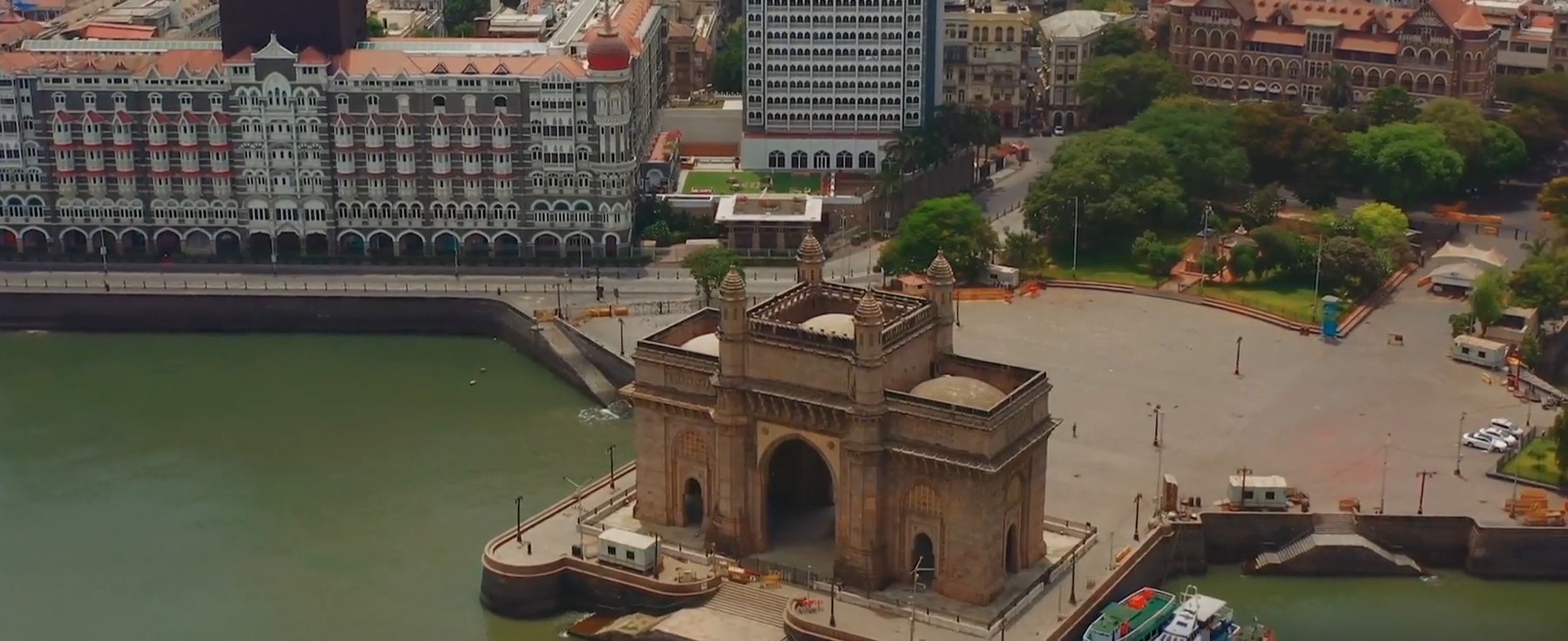

Start your journey from Mumbai, India’s entertainment and commercial capital. Its is connected by road, rail and air from almost all parts of the country and by flight to several foreign countries.
Day 1 Stop 1: Morning: Global Vipasana Pagoda
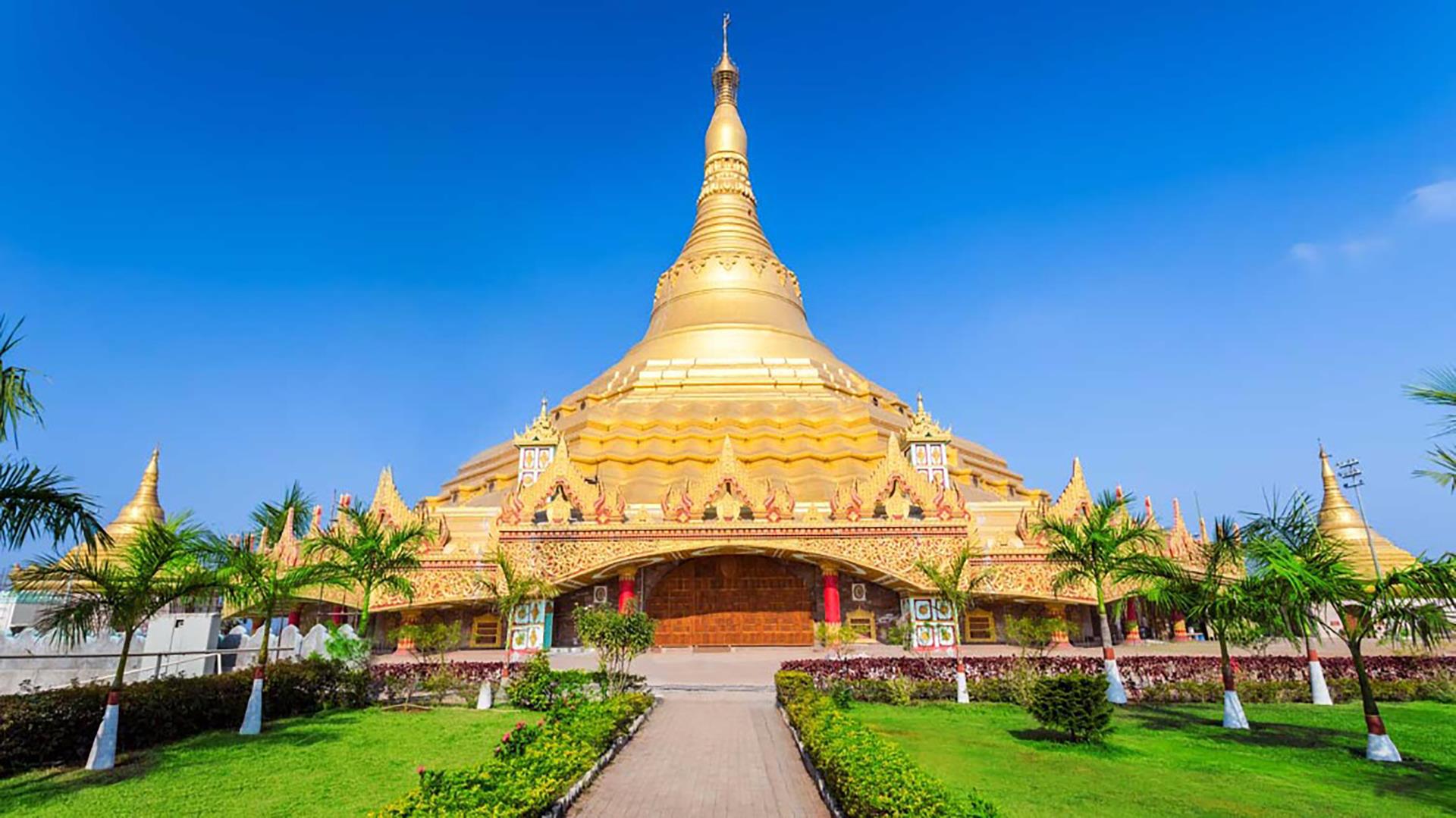
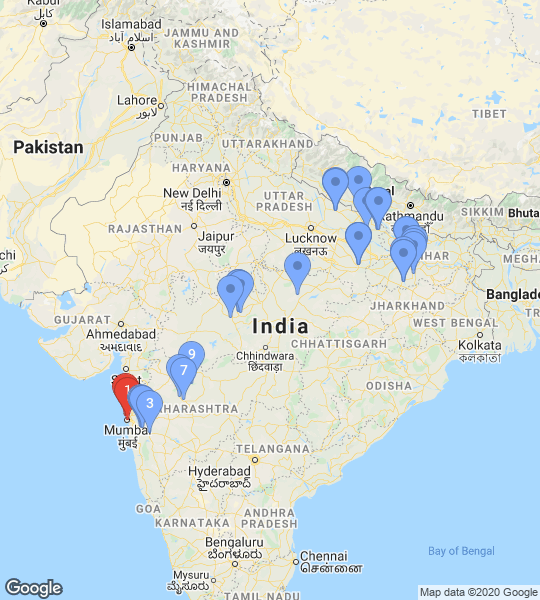
Set against the Arabian Sea (about 1.5 hours from Mumbai), this is a Buddhist meditation centre where the teachings and philosophies of Lord Buddha are preached.
Good to know:
It is said to be the world’s largest pillar-less dome and houses genuine bone relics of the lord.
What to do:
Visit the audio-visual centre in the complex and stop by the centre’s gallery to see historic wall mounts and photographs.
Transfer to:
Transfer to Pune, from where you will continue the rest of your Buddha journey in the state.
Transport Mode:
rail/road
Time:
3 hours (road), 4 hours (rail) - approximately
Day 2 : Arrive in Pune
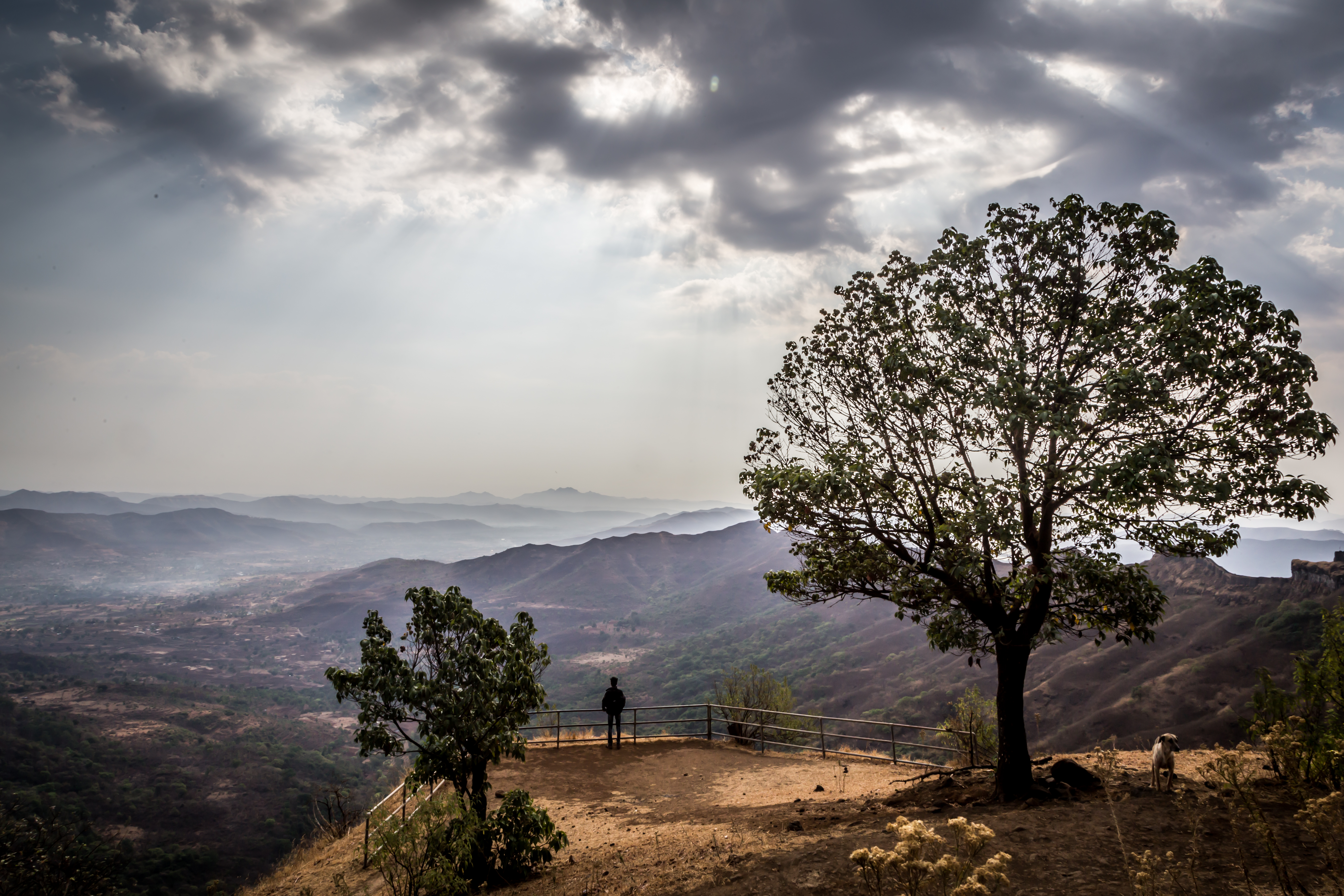
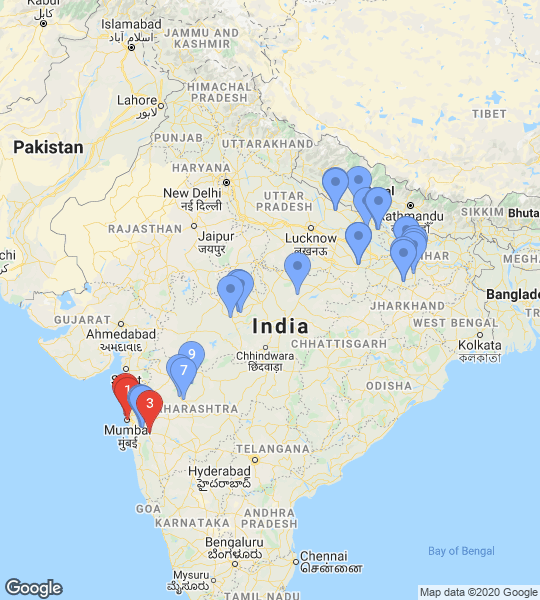
Before being taken over by the British in 1817, who eventually turned it into the monsoon capital of the erstwhile Bombay Presidency, Pune was the capital of Shivaji and the ruling Peshwas. Today, the city is a vibrant metropolis with a buzzing academic and business scene.
Day 2 Stop 1 : Afternoon: Bedse Caves

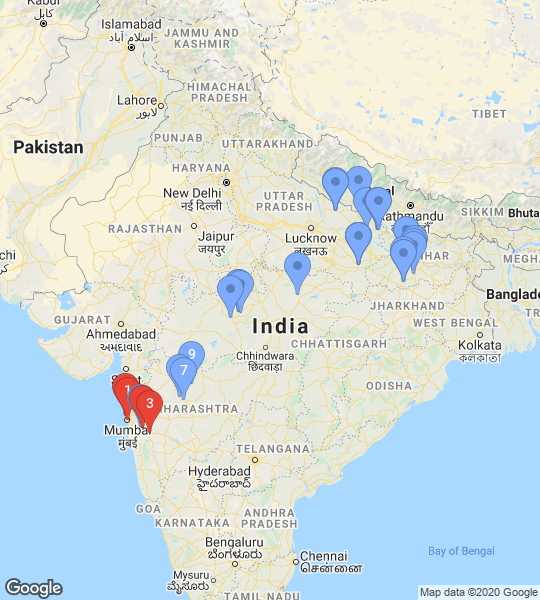
Located in the Maval taluka (about 1.5 hours away), these caves are said to have been excavated in the 1st century BC. The caves - two finished and two unfinished - are regarded as notable milestones of Buddhist cave architecture in India.
Good to know:
To reach the caves, you have to climb about 400 steps. It is best to wear a good pair of walking shoes.
What to do:
The beautiful prayer hall that houses a stupa and the residential cave.
Day 3 Stop 1: Morning: Karla caves


Drive past the Bedse Caves to reach the Karla Caves, located about 2 hours away. Perched on a hill, these 15 rock-cut Buddhist caves were built sometime between the 2nd and 5th century AD and are known for their inscriptions.
Good to know:
The caves boast a 45-m-high chaityagriha (prayer hall), considered to be the largest of its kind in India.
What to see:
The elegantly carved pillars - some topped by intricate sculptures and others bearing inscriptions in the ancient Brahmini script.
Day 3 Stop 2 : Afternoon: Bhaja Caves


Situated approximately 7.5 km (about 20 minutes) from Karla Caves, the Bhaja Caves are said to have been created between the 3rd century and 2nd century AD.
Good to know:
Of the 25 Buddhist caves here, only one is a chaityagriha and the rest are viharas (residential caves). This chaityagriha, touted to be one of the oldest in Maharashtra, houses a stupa and can be reached via an archway shaped like a horseshoe.
What to do:
Elaborate depictions that trace the history of the tabla, an Indian musical instrument, and those of dance performances.
Return to :
Return to Pune and transfer to Aurangabad in the morning for explorations.
Day 4 : Arrive in Aurangabad


A weekend destination for residents of the neighbouring cities of Mumbai and Pune, Aurangabad was the erstwhile capital of Mughal emperor Aurangzeb between 1653 and 1707. It also serves as the perfect base to explore the Buddhist caves of Ajanta and Ellora.
Day 4 Stop 1 : Morning: Ellora caves

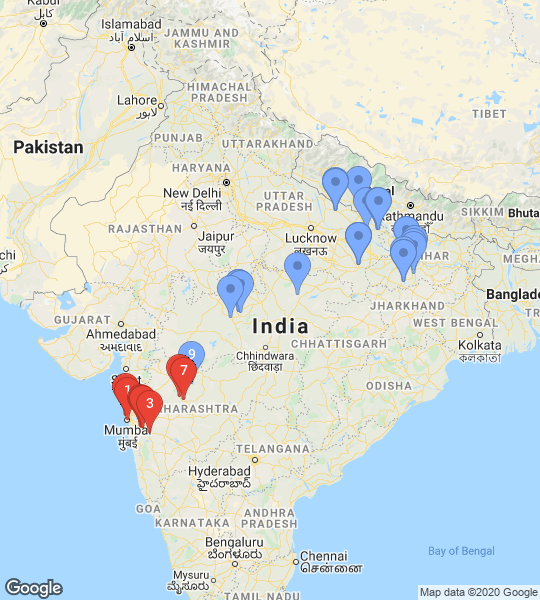
Located near the village of Ellora (about 30 km northwest of Aurangabad), these are a series of 34 stunning rock-cut Buddhist, Jain and Hindu temples with elaborate facade and intricate interiors.
Good to know:
Spread across a stretch of two kilometres, the Ellora caves have been declared by UNESCO as World Heritage Sites.
What to do:
Immaculately-sculpted images of Lord Buddha inside the caves.
Day 4 Stop 2: Afternoon: Ajanta Caves
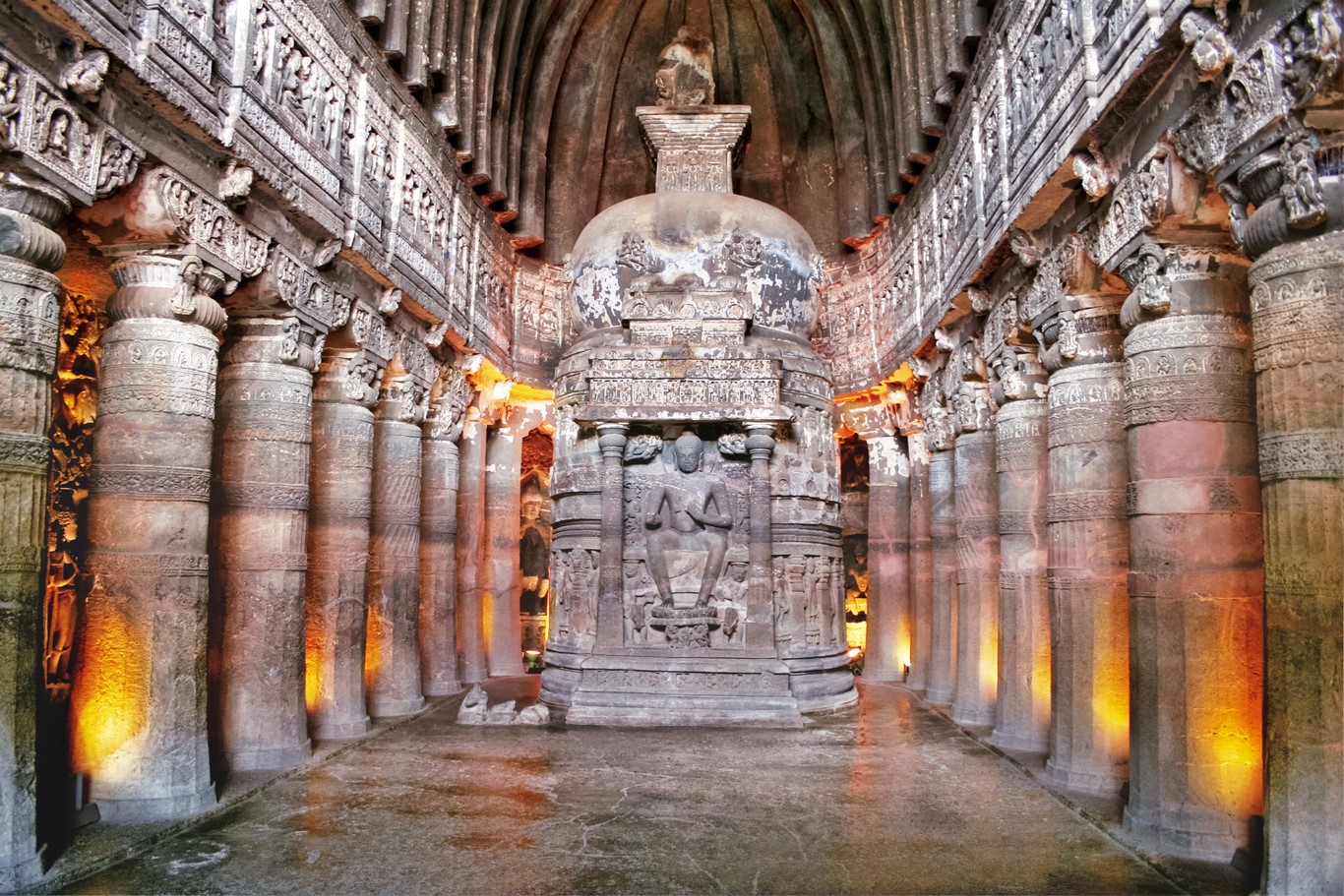
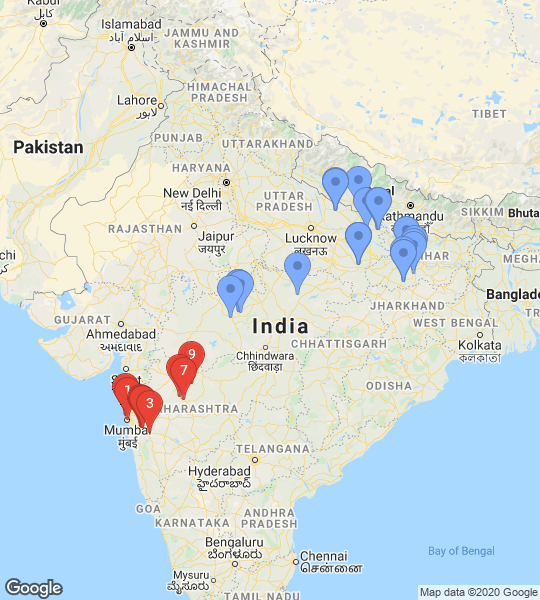
Said to be much older than Ellora, the caves of Ajanta are believed to be one of the earliest monastic institutions in India.
Good to know:
Also a UNESCO World Heritage Site, Ajanta caves date between the 2nd and 6th century BC but remained deserted for centuries before John Smith, a British officer, discovered them by chance during a hunting spree in 1819.
What to do:
Though all the 30 caves of Ajanta are worth exploring, do not miss cave 1, which was the last to be excavated. A Mahayana viraha, it is where you will come across a version of the Bodhisattva Padmapani, one of the most noted of Ajanta’s murals.
Travel to :
Head back to Pune and transfer to Bhopal, Madhya Pradesh.
Transfer Mode:
rail/air (Note that there are no direct flights between the two cities)
Time:
Approximately 15 hours (rail), minimum of 5 hours (air)
Day 3: Arrive in Bhopal

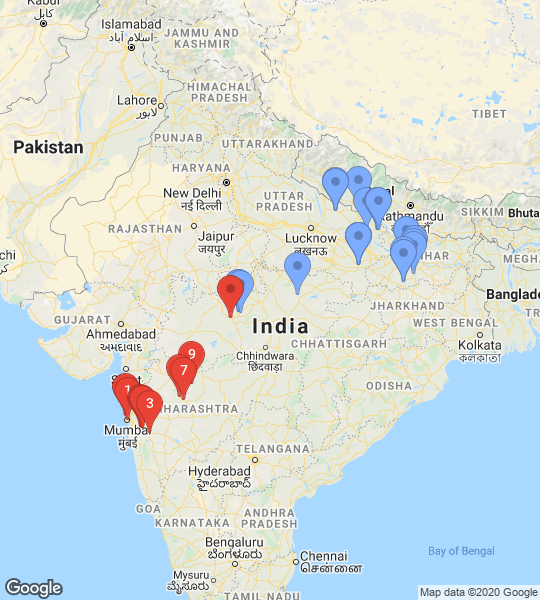
The capital of Madhya Pradesh, Bhopal is a city of contrasts, divided by two pristine lakes. While one side of the waterbodies lies the old walled city, the other side sports a cosmopolitan vibe. Boasting several national parks and wildlife sanctuaries teeming with flora and fauna - Bhopal is one of the greenest cities in the country.
Travel to :
Transfer to Sanchi for the night to begin your explorations the following morning.
Day 6 : Arrive in Sanchi
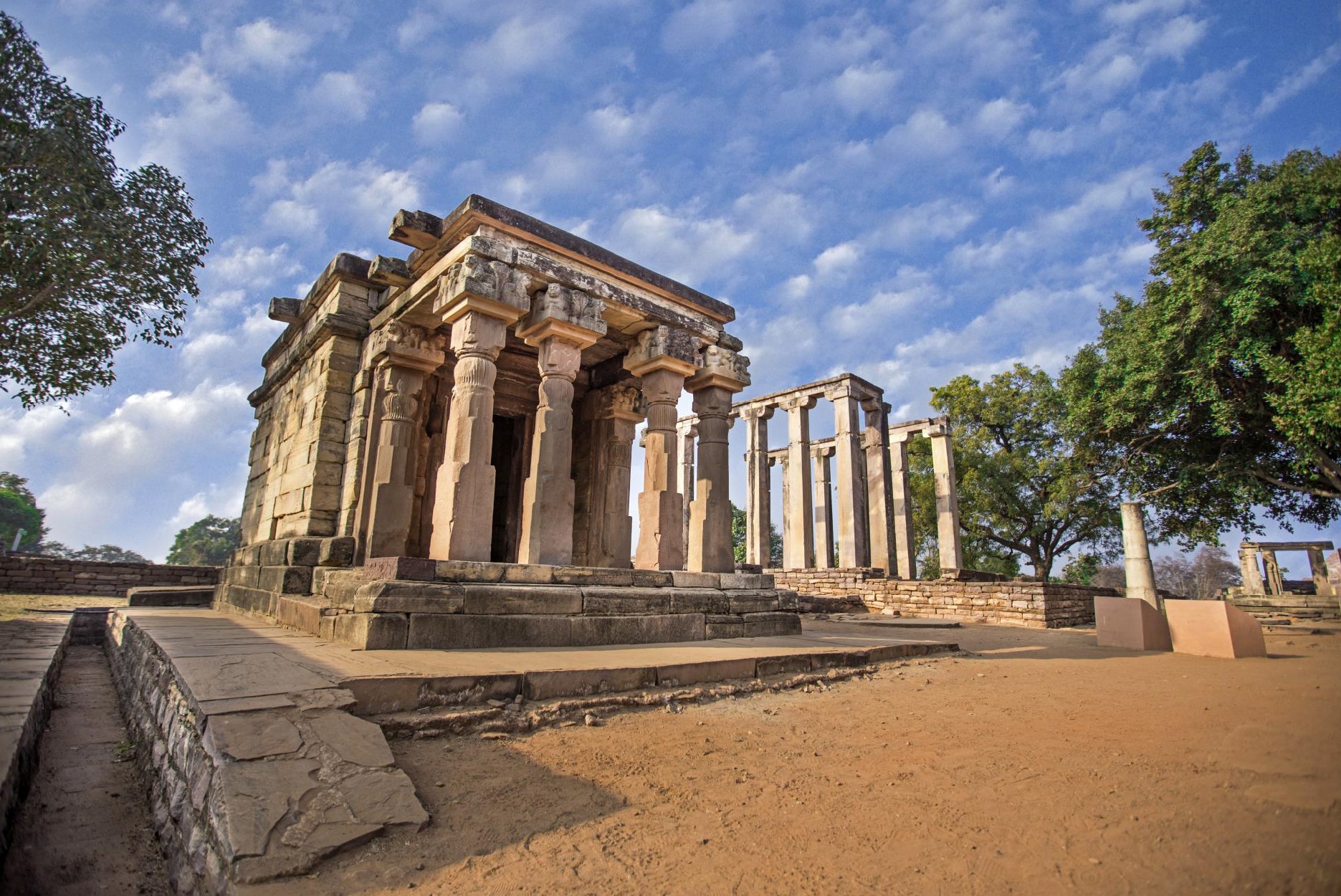

Located on a plateau region west of the Betwa River, the historic site of Sanchi is famous for preserving some of the country’s oldest monuments associated with Buddhism.
Day 6 Stop 1: Morning: Sanchi Stupa/ Great Stupa of Sanchi

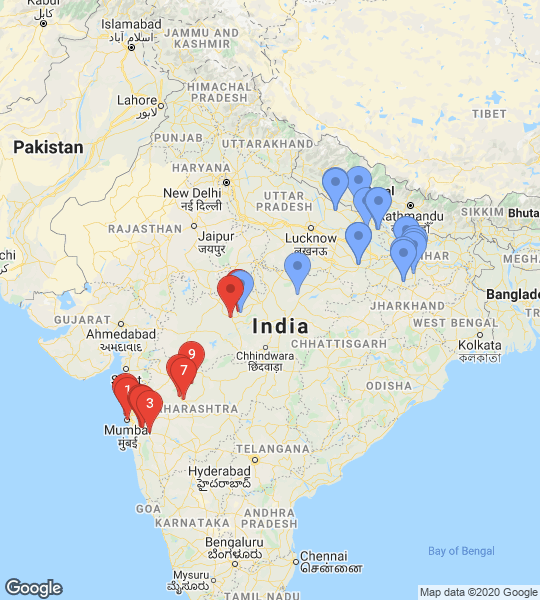
A UNESCO World Heritage Site, this stupa stands 42 feet high and is surrounded by intricately-carved toranas (arched gateways). It was commissioned by emperor Ashoka after he embraced Buddhism following the aftermath of the Kalinga war.
Good to know:
This was where emperor Ashoka’s son Mahindra and daughter Sanghmitra received their first lessons before being sent to Sri Lanka.
What to do:
The elaborate carvings on the gateways. Known as Sanchi scriptures, they give a pictorial depiction of the life of Lord Buddha, stories of his previous births and notable moments from the lord’s life. Keep an eye out for the scene that showcases emperor Ashoka’s visit to the Bodhi tree in Bodhgaya or Bodh Gaya, where Lord Buddha attained enlightenment.
Day 6 Stop 2 : Afternoon: Satdhara


About 30 minutes from the Sanchi stupa lies Satdhara, a lesser-known yet equally-stunning Buddhist site comprising stupas, chaityas and a rock shelter, inside which an image of Lord Buddha is painted. The main stupa here is modelled on similar lines like that in Sanchi. The 13-m-high Stupa number 1 is almost as large as the Sanchi Stupa.
Good to know:
It is protected by the Archaeological Survey of India and requires no entry fee.
What to do:
Caskets containing relics of Sariputra and Mahamauglayan (believed to have been disciples of Lord Buddha) in Stupa number 2.
Day 6 Stop 3: Evening: Murelkhurd Stupas

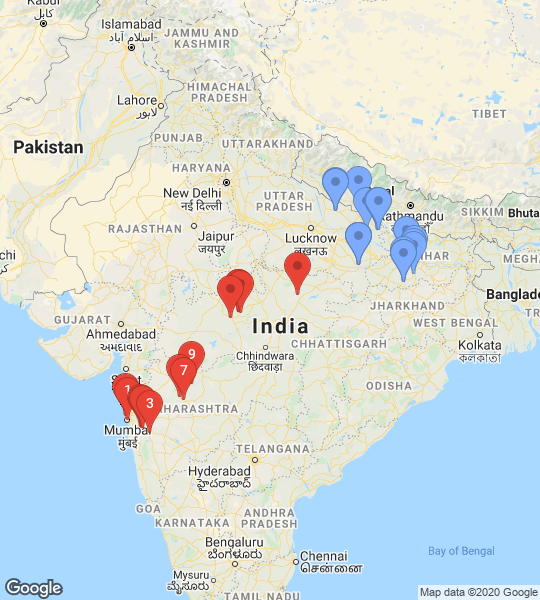
A 30-minute drive from Sanchi will lead you to 37 stupas at Bhojpur near Murelkhurd (also known as Bhojpur stupas). Two Buddhist temples also stand here
Good to know:
These were discovered by Major Cunningham, a Britisher, in the 19th century, and are today protected by the Archaeological Survey of India.
What to do:
The biggest stupa whose hemisphere measures 2.30 m.
Travel to :
Travel back to Bhopal and transfer to Gorakhpur, Uttar Pradesh, for more Buddhist sites.
Transport mode:
rail
Time:
15-17 hours (approximately)
Day 7 : Arrive in Gorakhpur


Sitting pretty on the banks of River Rapti, Gorakhpur is rooted in history, literature and spirituality. It is as associated with Munshi Premchand and Kabirdas (noted literary figures) as it is with Lord Buddha. It is also one of the closest destinations to Kapilavastu (Kapilvastu), where the lord is said to have spent his childhood. Make your way to Kapilavastu the next day.
Day 8 : Arrive in Kapilavastu


Former capital of the Shakya clan and the erstwhile kingdom of king Suddhodhana (Shuddhodan), father of Lord Buddha, Kapilavastu boasts several quaint villages and is an important stop in the state’s Buddha circuit. It is said to be where Lord Buddha spent the first 29 years of his life as Prince Siddhartha before leaving in search of a path of salvation, only to return 12 years later after attaining enlightenment.
Day 8 Stop 1: Afternoon: Main stupa

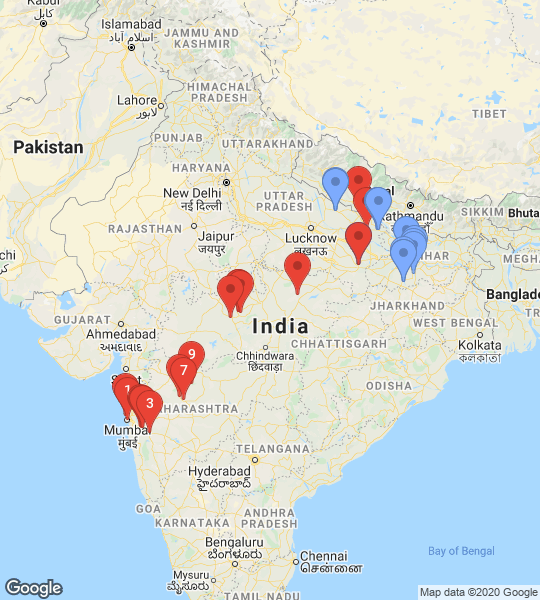
Believed to have once housed the sacred relics of Lord Buddha, this large stupa was unearthed during excavations sometime during the 1970s.
Good to know:
A site of archaeological importance, the stupa is believed to have been renovated by Kanishka, a Kushana ruler and a devoted patron of Buddhism.
What to see:
Visit the ruins of king Suddhodhana’s palace.
Day 9 : Arrive in Kushinagar
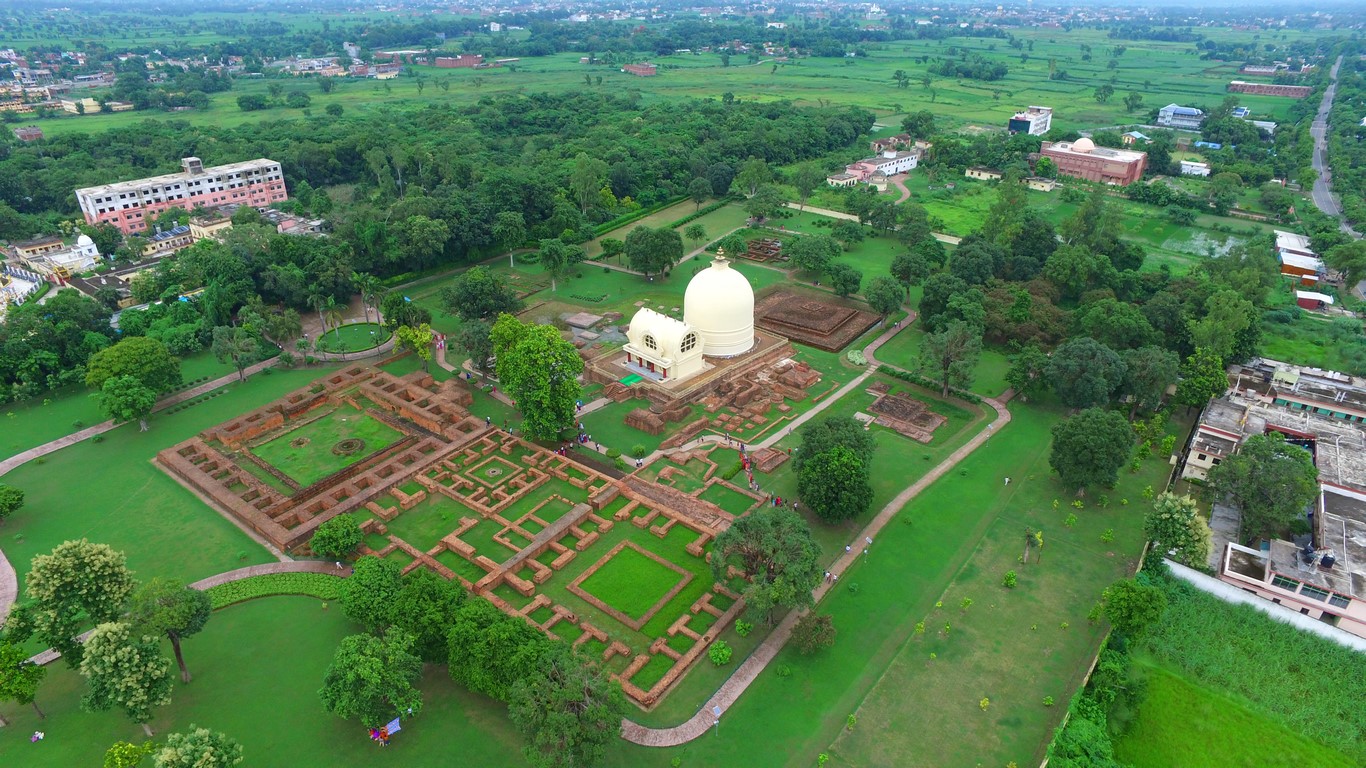
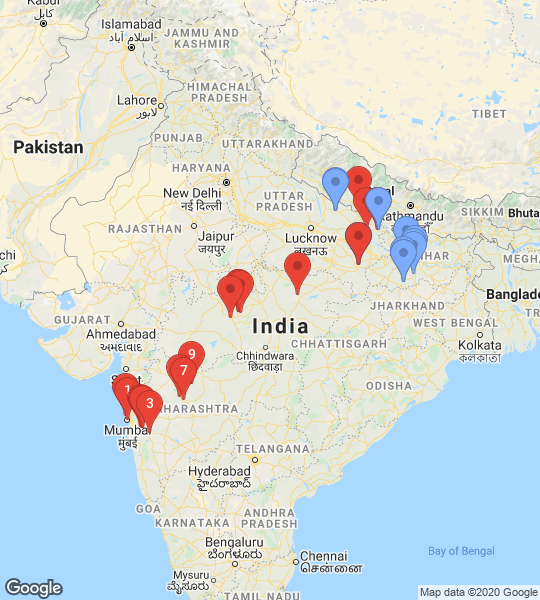
One of the most prominent sites in India’s Buddha circuit, this ancient city is where Lord Buddha attained Mahaparinirvana. It is believed to have derived its name from its founding ruler Kush, Lord Rama’s son.
Day 9 Stop 1 : Morning: Mahaparinirvana Temple

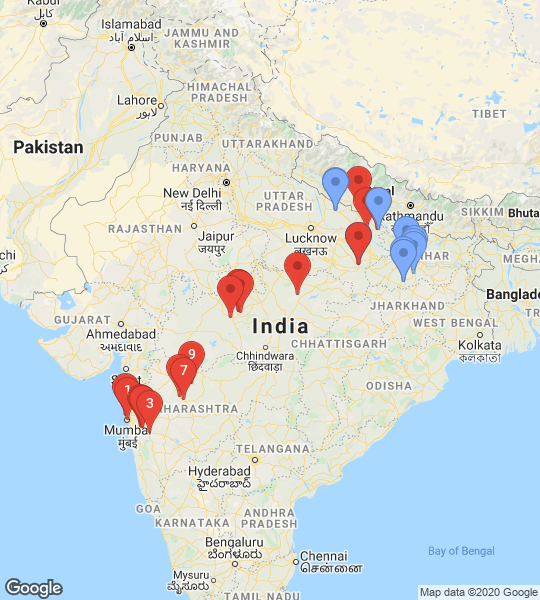
It is the site where Lord Buddha is said to have taken his last breath in 483 BC.
Good to know:
It is open all week long.
What to see:
The 6.10-m-long statue of Lord Buddha, reclining on his right with his eyes closed, is carved out of chunar sandstone.
Day 9 Stop 2: Afternoon: Rambhar Stupa

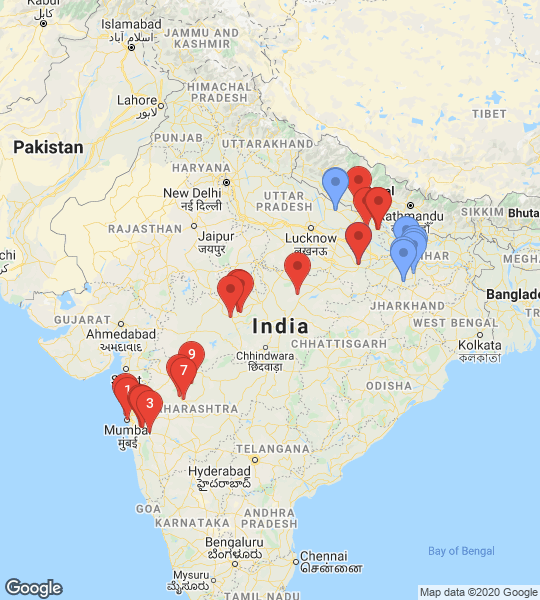
Located close by, this is the site where Lord Buddha was cremated. Appearing like a dome-shaped structure of red bricks, this stupa is 15 m high.
Good to know
Monks and pilgrims offer lotus flowers and meditate near the path leading to the temple, which is lined with palm trees.
What to do:
Take a walk in the landscaped gardens here.
Day 10 : Arrive in Sarnath
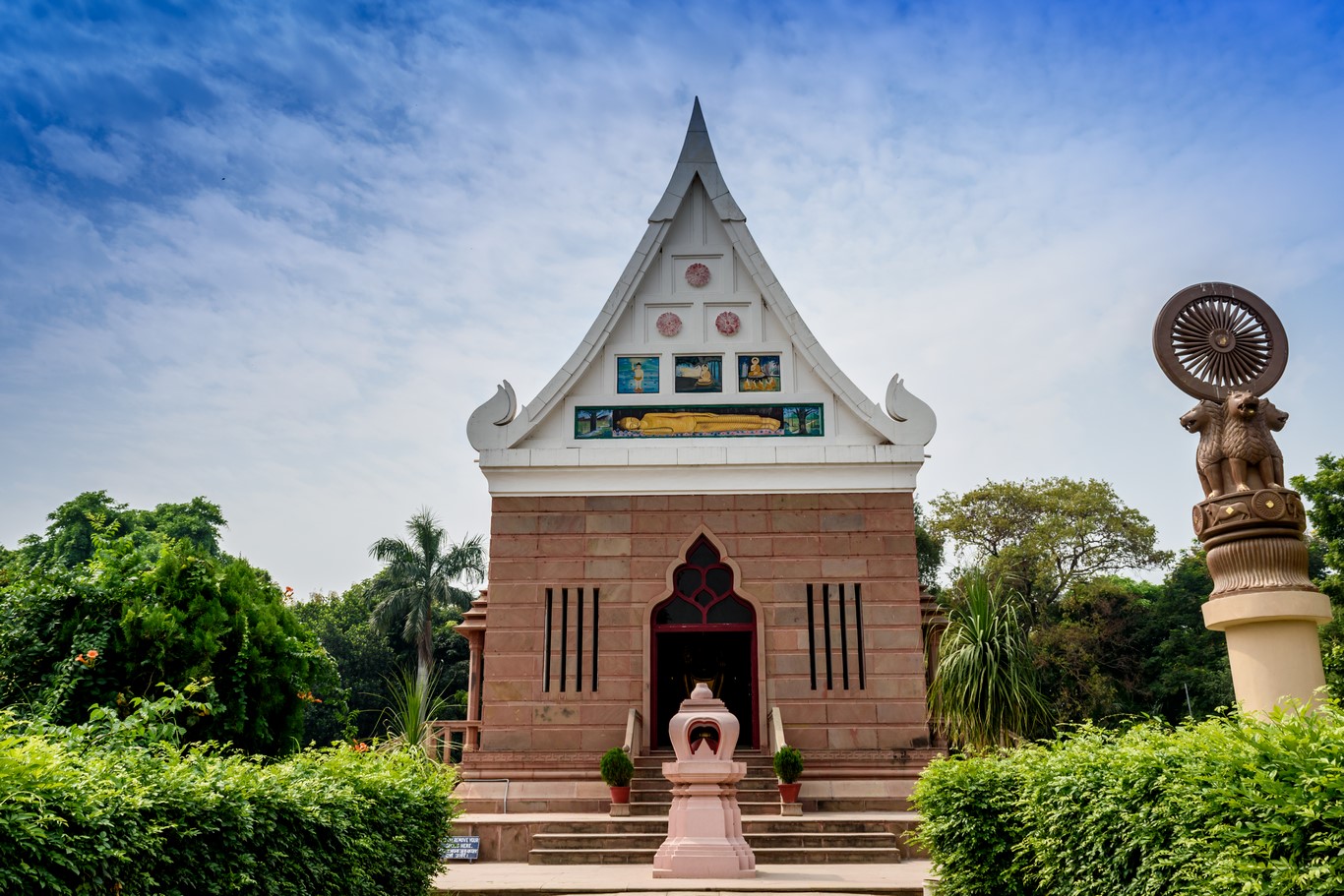
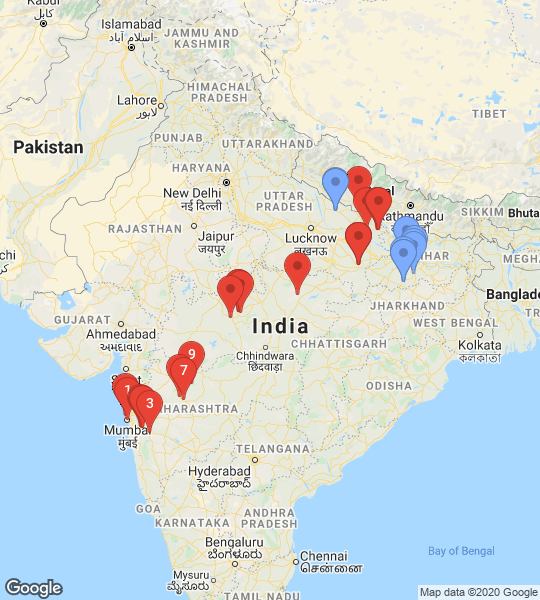
Hailed as one of the most revered Buddhist sites, Sarnath is where Lord Buddha is believed to have delivered his first sermon after attaining enlightenment.
Day 10 Stop 1: Morning: Dhamek Stupa
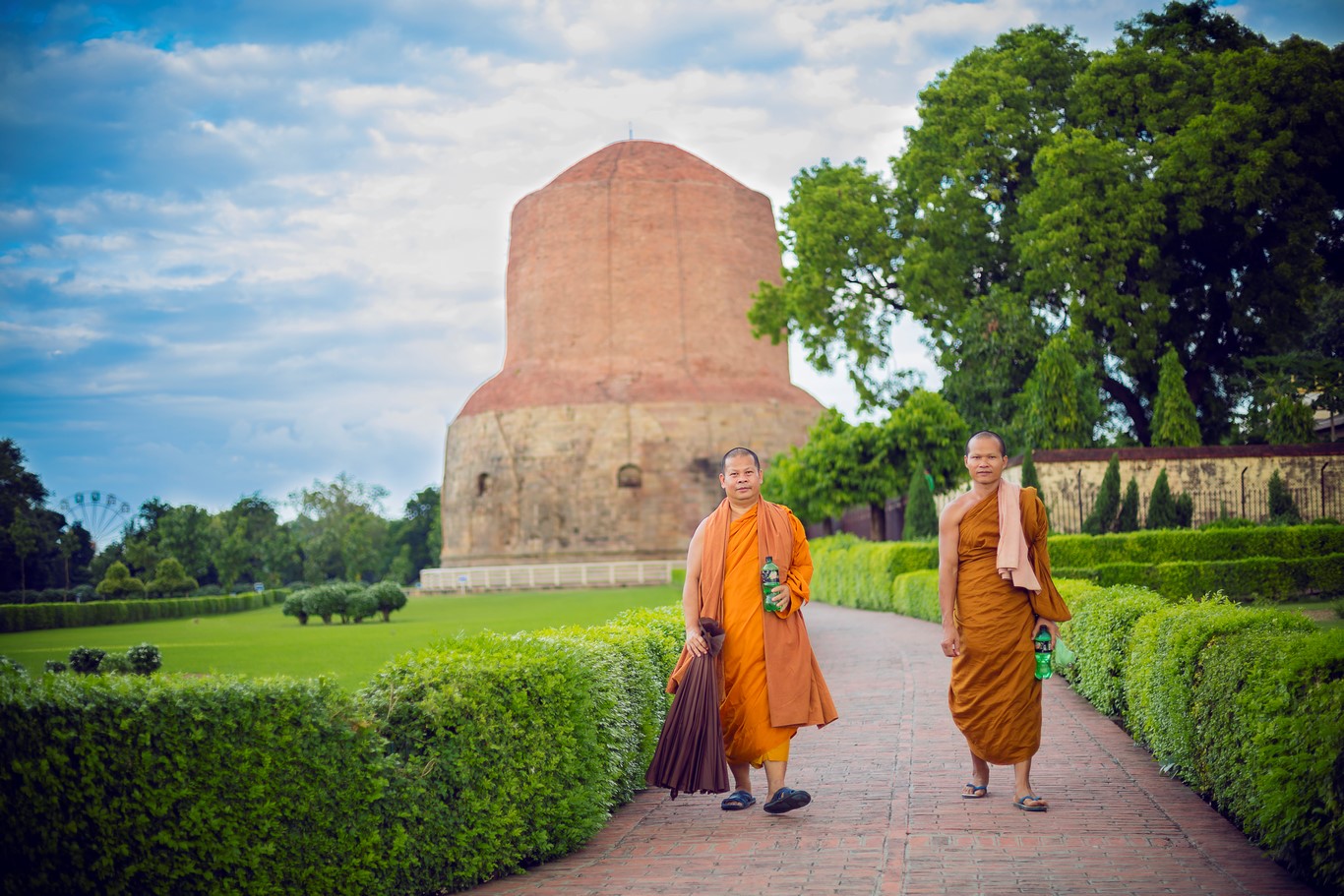
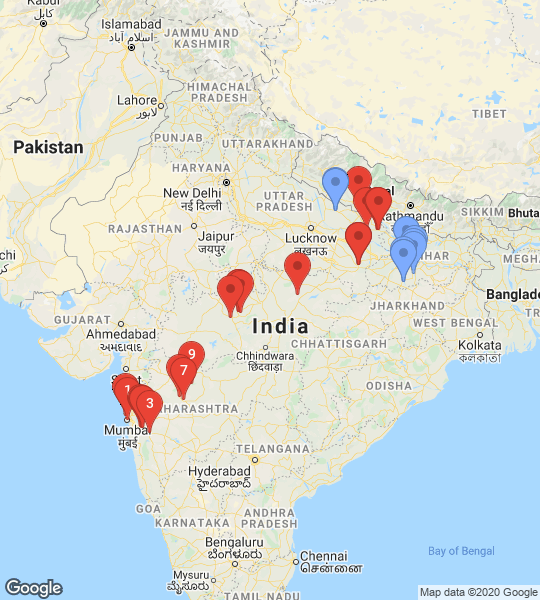
An archaeological excavated site, this stupa is said to have been built to commemorate the first sermon delivered by Lord Buddha to five of his disciples after attaining enlightenment. Keep an eye out for the finely-carved figures of humans and birds and inscriptions written in the ancient Brahmini script on the walls.
Good to know:
This 43.6-m-high monument is constructed partly with stone and partly with bricks.
What to do:
Visit the Chaukhandi Stupa, located at a three-minute walking distance. This is where Lord Buddha is said to have met his first five disciples.
Day 10 Stop 2: Afternoon: Ashoka Pillar


Of the many pillars erected by the emperor, the metallic one at Sarnath is most notable. Established between 272 and 273 BC, this 50-m-high structure marks the foundation of the Buddhist Sangha.
Good to know:
The pillar’s ornately-carved capital (also called the Lion Capital), which is over seven feet long, was adopted as the national emblem of India in 1950.
What to see:
The three distinct sections of the capital - the lotus flower base; a cylindrical abacus carved with figures of a lion, a bull, an elephant and a horse pointing to the four cardinal directions with carvings of dharma wheels between them; and four lions sculptures on top.
Day 11 : Arrive in Sravasti
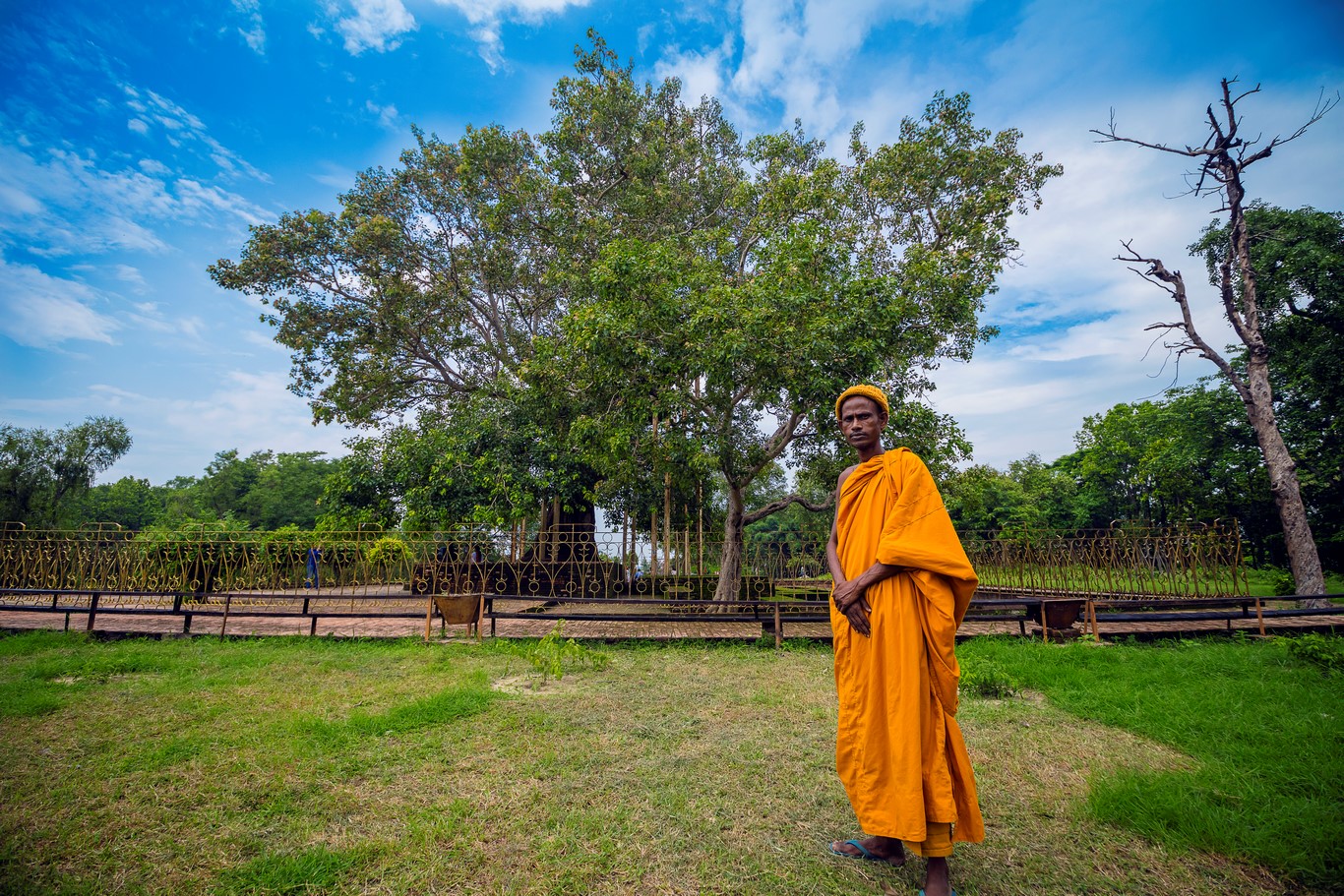
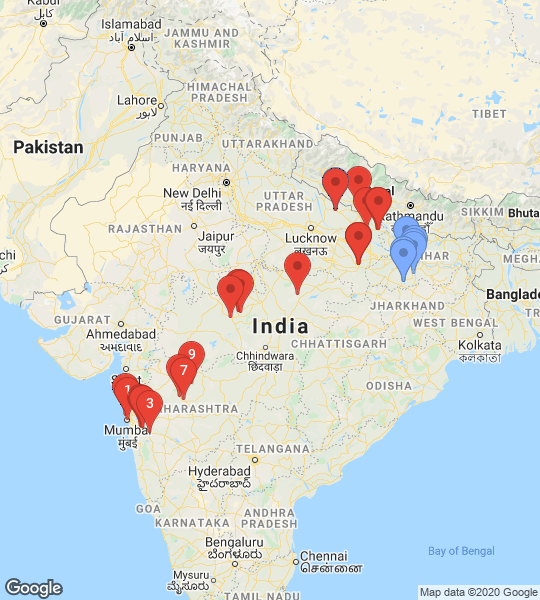
One of the sixth-largest cities during the time of Lord Buddha, Sravasti is located on the banks of River Rapti and was once the capital of the Kosala (Koshal) kingdom ruled by king Pasendi, a disciple of Lord Buddha. It is said to be the site where Lord Buddha spent 24 monsoon seasons in a monastery (constructed by one of his followers, Ananthapindika) and delivered his teachings and sermons.
Day 11 Stop 1: Morning: Jetavana Mahavira


Sprawled across a vast area (about 1.7 sq km), the Jetavana Mahavira once hosted Lord Buddha and his pilgrims.
Good to know:
Lord Buddha stayed here for nine years.
What to do:
The Anandabodhi tree that is believed to have grown from a sprig brought from the Mahabodhi tree in Bodhgaya, Bihar, under which Lord Buddha had attained enlightenment.
Day 11 Stop 2: Afternoon: Mahet

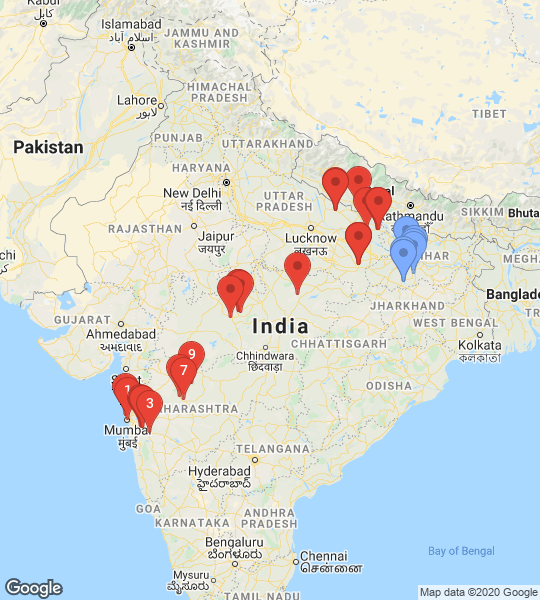
This area of Sravasti is known for two sites, namely Kachhi Kuti and Pakki Kuti. While the first is the ruins of the Ananthapindika stupa, the second is known as the cave of a dacoit named Angulimal (Anguimala).
Good to know:
Pakki Kuti is one of the largest mounds in this area of Sravasti.
What to do:
The structural remains dating back to the period between 2nd and 12th century.
Day 12 : Arrive in Gaya

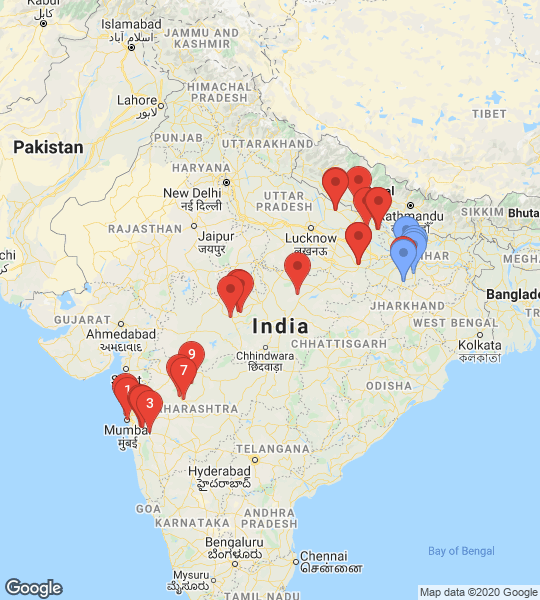
The second-largest city of Bihar, Gaya is nestled amidst rocky hills and a river. It is one of the most important sites associated with Lord Buddha in India as it is the city where, under a Bodhi tree, Lord Buddha attained enlightenment.
Day 12 Stop 1 : Morning: Mahabodhi Temple
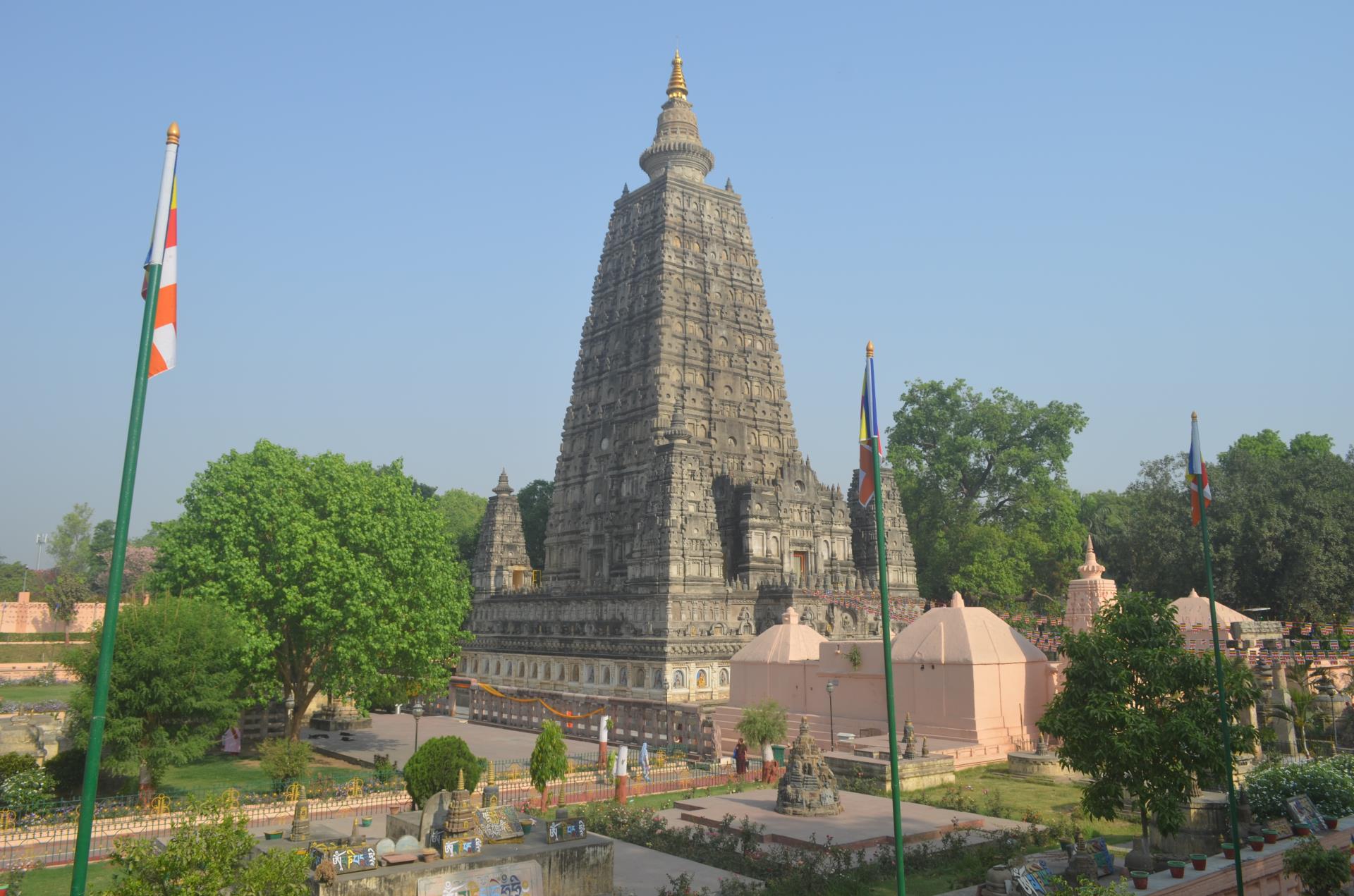

A UNESCO World Heritage Site, this temple compound houses the revered Bodhi tree.
Good to know:
The temple is originally believed to have been built by emperor Ashoka. However, the current structure was first restored in 1883.
What to do:
The Meditation Park, an open space with arrangements for sitting, created for prayers and peace.
Day 12 Stop 2 : Afternoon: Sujata Garh

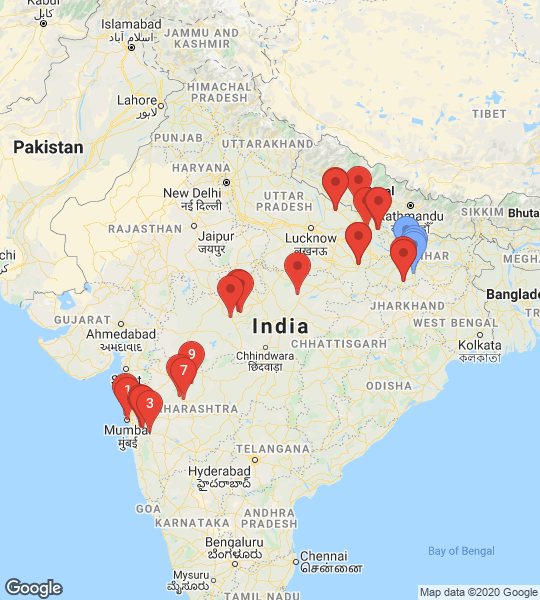
Just across the Phalgu river (about seven minutes from the Mahabodhi Temple) lies Sujata Garh, an ancient stupa.
Good to know:
This is believed to be the spot where Lord Buddha meditated before he attained enlightenment. According to legend, it is named after Sujata, a village lady, who offered rice pudding to the lord.
What to see:
The peepal tree here is a reminder of the connection between the lord and the tree.
Day 13 : Arrive in Nalanda
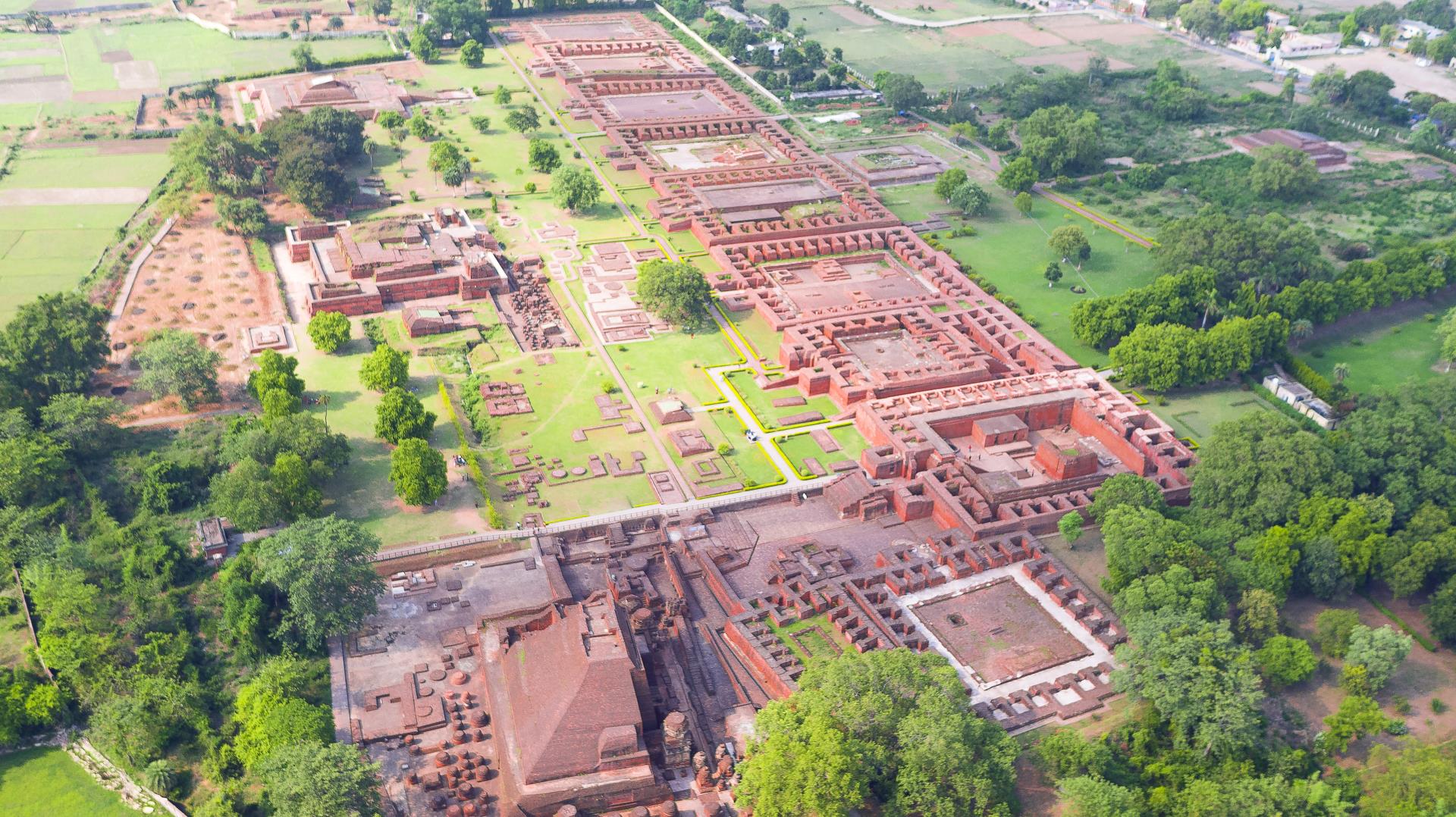
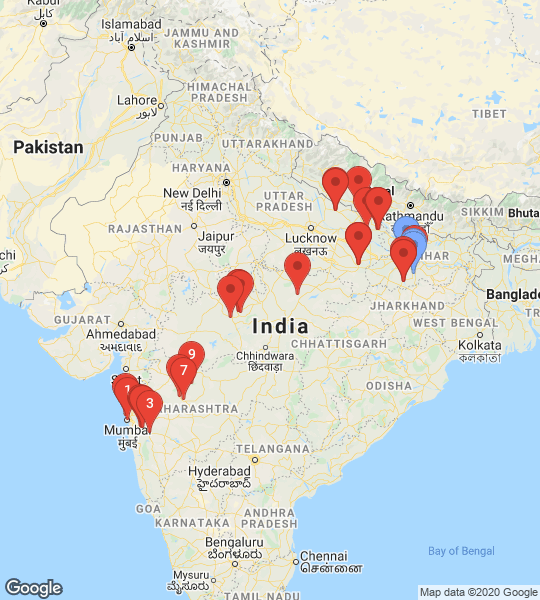
Situated at the south of the state capital Patna, Nalanda was once the site of the first residential international universities in the world. It has also been the site where several religions, including Buddhism, Hinduism, Jainism and Sufism have flourished.
Day 13 Stop 1 : Morning: Vishwa Shanti Stupa
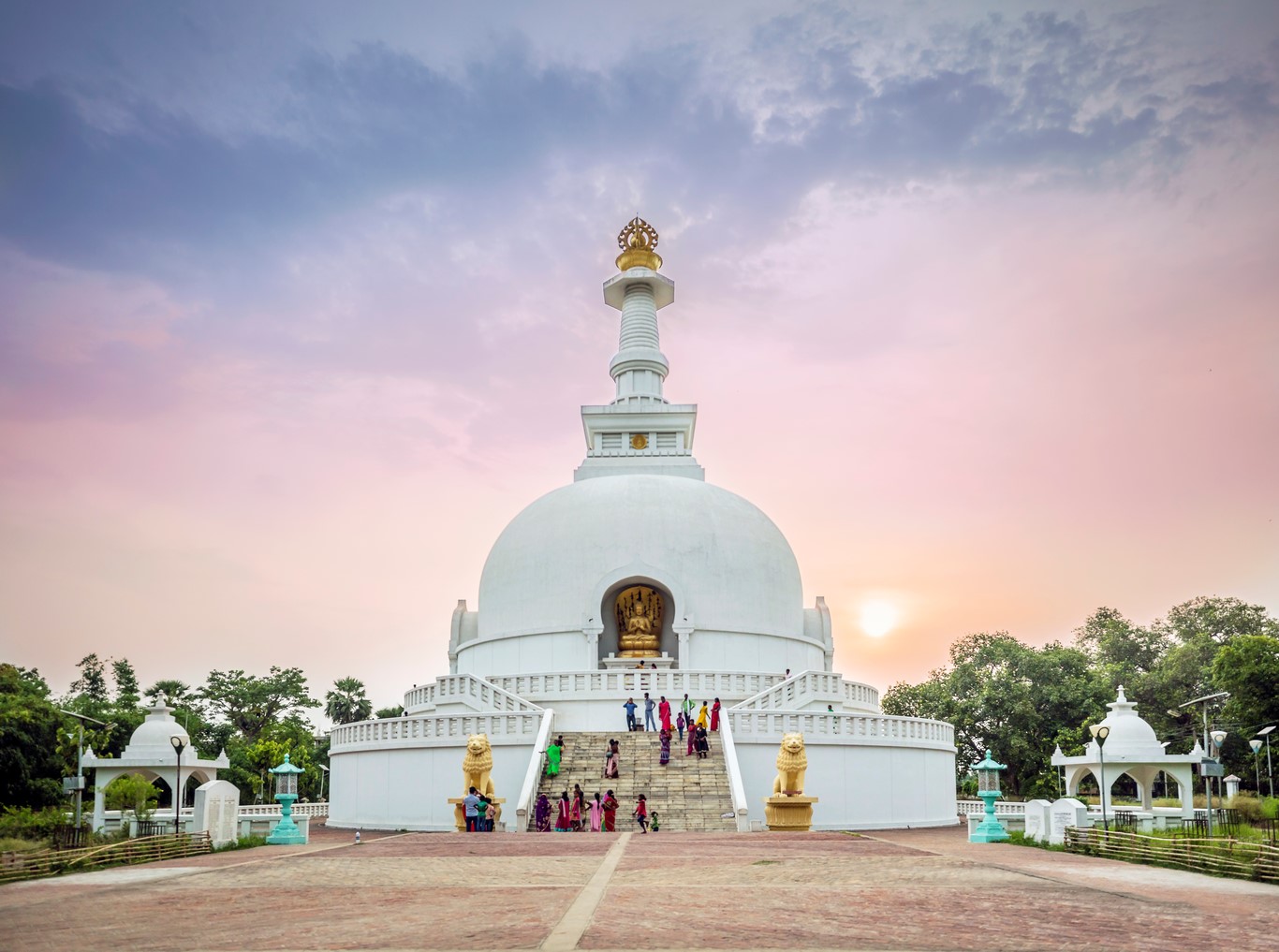
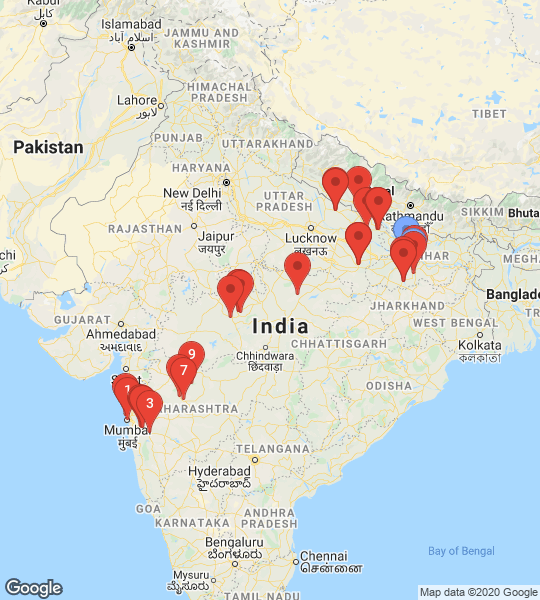
Perched on top of the Ratnagiri hill, this 125-ft-high stupa celebrates Lord Buddha. It is reached by an eight-minute (approximately) ropeway ride.
Good to know:
This stupa lies adjacent to Gridhkuta peak, Lord Buddha’s favourite site for meditation. It can be reached via climbing down a well-maintained pathway from here.
What to do:
The four golden statues of Lord Buddha that surround the dome.
Day 13 Stop 2: Afternoon: Nalanda University Ruin
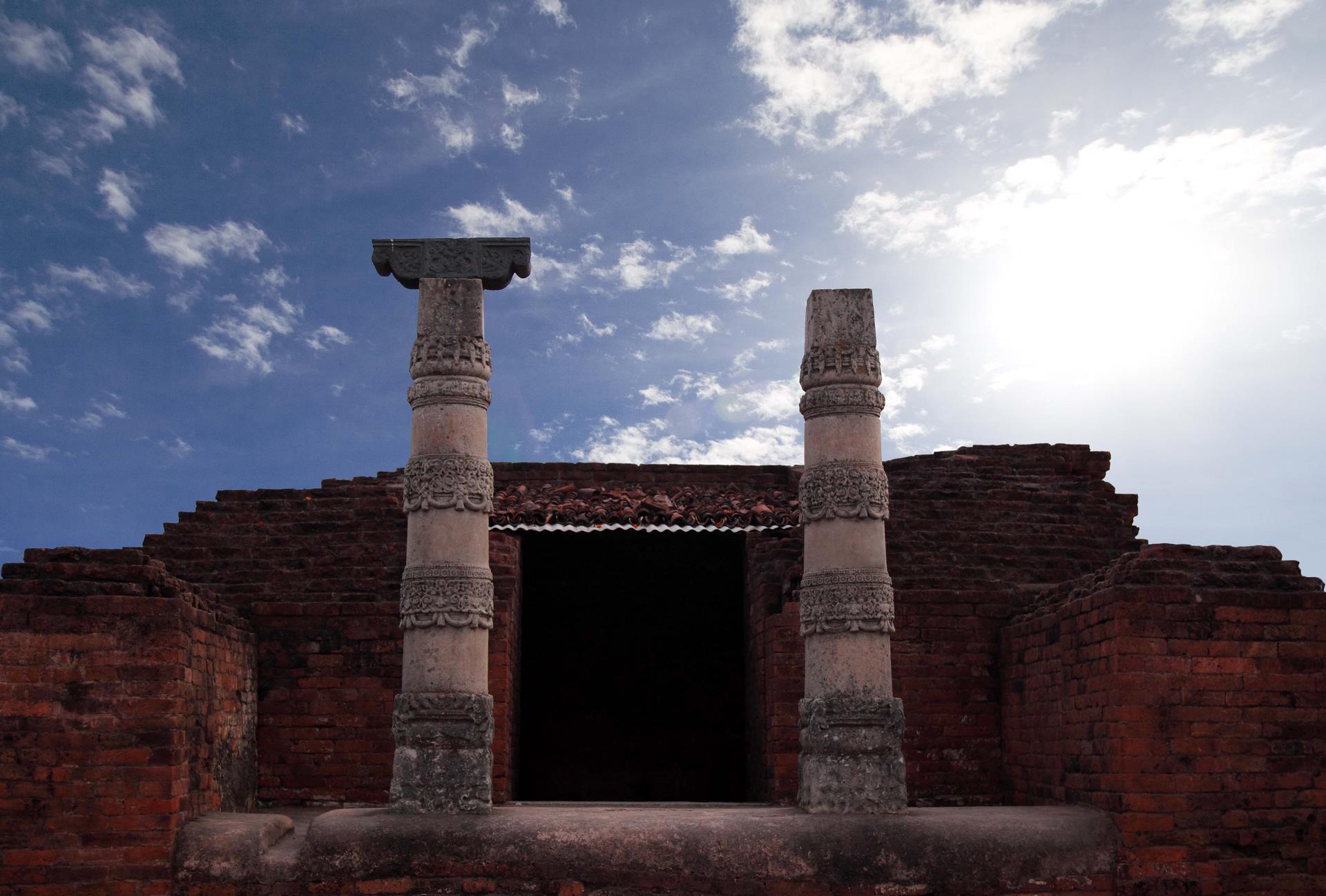

These are the remnants of what was considered one of the oldest international universities that flourished somewhere between 5th (or 6th) century CE till 13th century.
Good to know:
According to seventh-century Chinese traveller Zuanzang, the excavated part of the ruins (about 14 acres of land) accounts for only 10 per cent of the entire area on which the institution was spread.
What to do:
Take a stroll through the red-brick structures of stupas, temples and dormitories where, once, as many as 10,000 students and 2,000 teachers lived and exchanged knowledge.
Day 14: Arrive in Patna
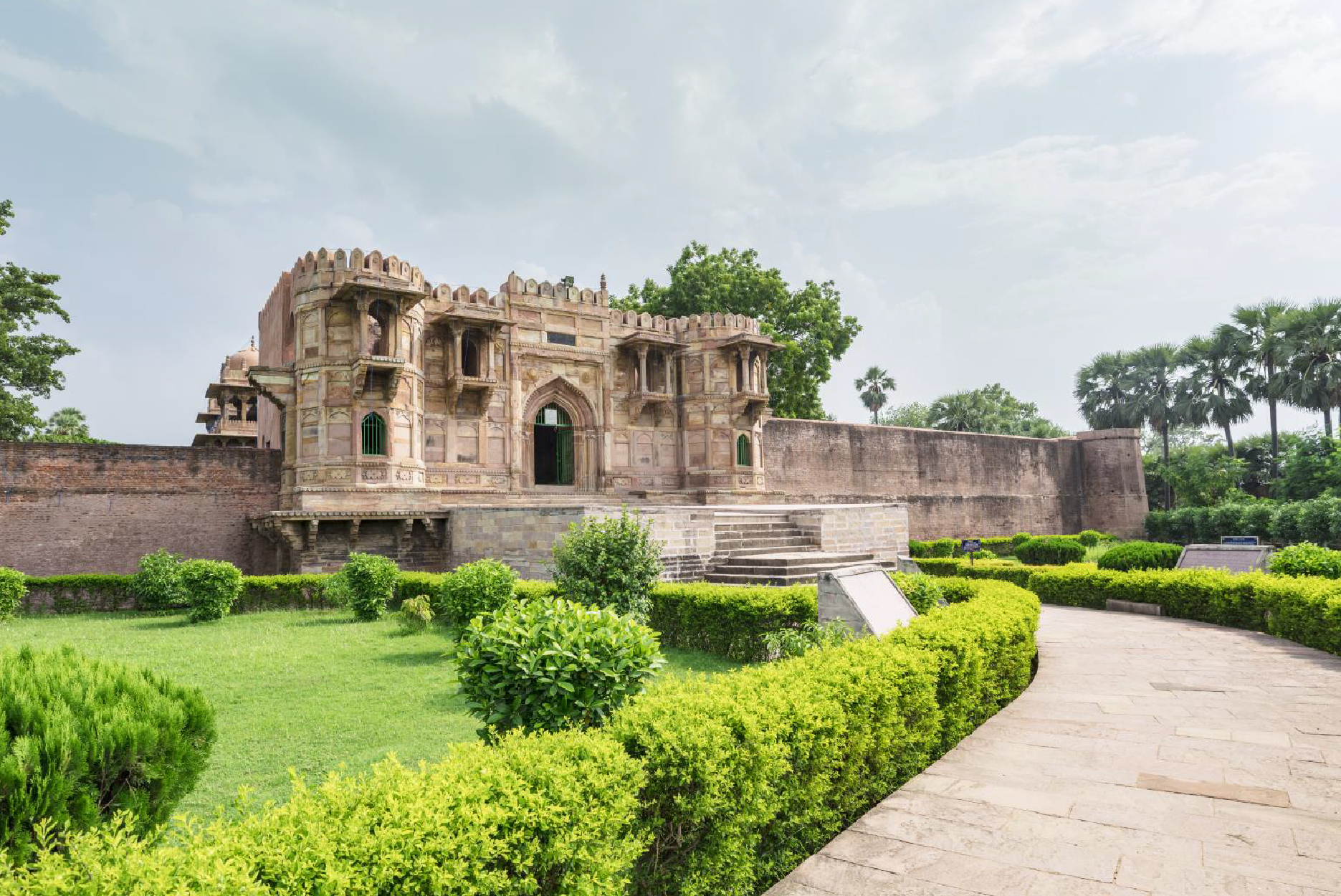
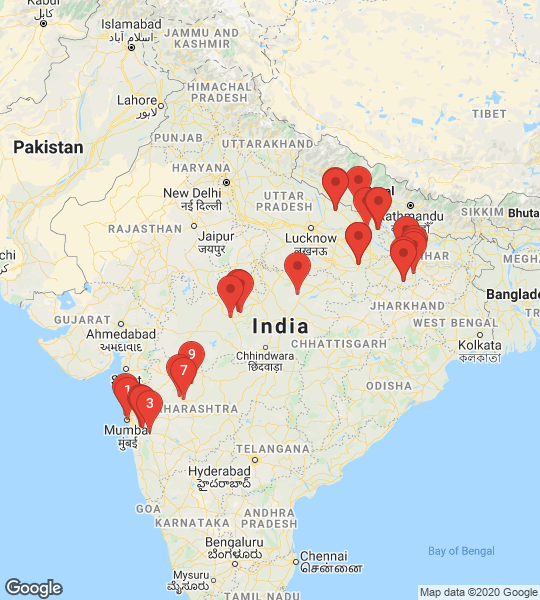
The capital of Bihar, Patna spreads out along the southern banks of the Ganges river. Lord Buddha had once predicted that a great city would arise at the current location of the city, which was further proved true when king Ajatashatru shifted the capital of his Magadha empire from Rajgir to erstwhile Pataliputra (present-day Patna).
Day 14 Stop 1 : Afternoon: Buddha Smriti Park

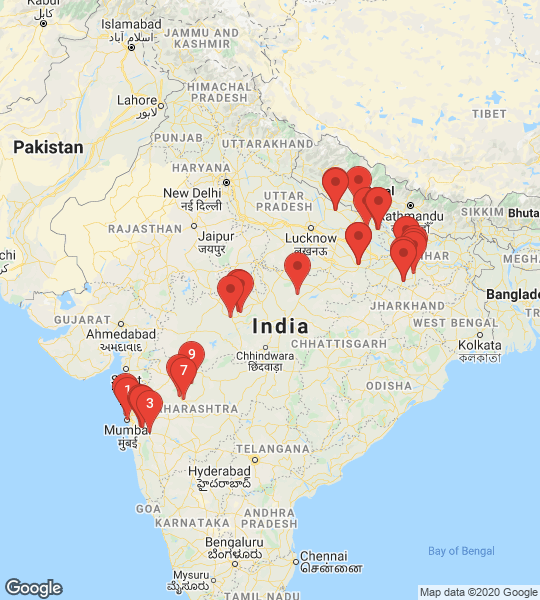
Spread over 22 acres, this park was developed to commemorate the 2554th birthday of Lord Buddha by the Government of Bihar.
Good to know:
The 200-ft-high Pataliputra Karuna Stupa, the highlight of the park, houses a relic of Lord Buddha that was excavated from Vaishali. The park also boasts two Bodhi trees planted by the Dalai Lama. 4
What to do:
Visit the meditation centre, the museum and the library housed in the park premises.









